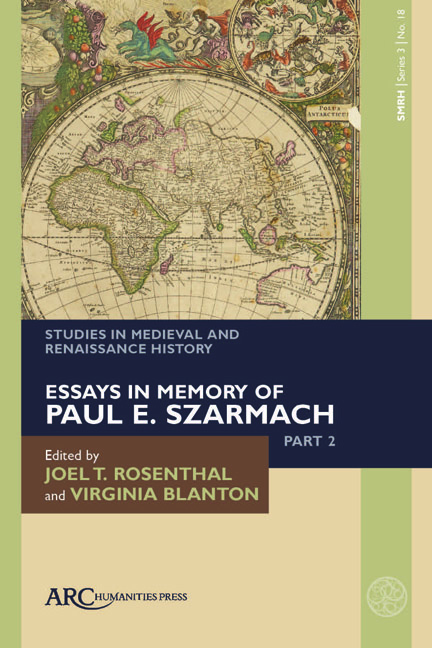Book contents
- Frontmatter
- Contents
- List of Illustrations
- Introduction
- The Development of Constantinian Themes and Their Manifestation in Writings and Coinages of Early England
- Echo and Icon : Life in Stone at Bewcastle, Cumbria
- Jerome of Strido at Chelles: The Legacy of Quedlinburg Codex 74
- Revisiting the Maaseik Zoomorphic Embroideries
- The Old English Version of Alexander’s Letter to Aristoteles and its Use of Binomials
- Agency and Obedience : The Afterlife of St. Swithun in Anglo-Saxon England
- B. and the Vita Harlindis et Renulae
- Wheelock’s Bede and Its Supplementary Materials : Goals and Methods
Revisiting the Maaseik Zoomorphic Embroideries
Published online by Cambridge University Press: 13 April 2024
- Frontmatter
- Contents
- List of Illustrations
- Introduction
- The Development of Constantinian Themes and Their Manifestation in Writings and Coinages of Early England
- Echo and Icon : Life in Stone at Bewcastle, Cumbria
- Jerome of Strido at Chelles: The Legacy of Quedlinburg Codex 74
- Revisiting the Maaseik Zoomorphic Embroideries
- The Old English Version of Alexander’s Letter to Aristoteles and its Use of Binomials
- Agency and Obedience : The Afterlife of St. Swithun in Anglo-Saxon England
- B. and the Vita Harlindis et Renulae
- Wheelock’s Bede and Its Supplementary Materials : Goals and Methods
Summary
EIGHT MEDIEVAL EMBROIDERIES in gold and silk were rediscovered in Belgium in 1867, attached to a composite textile known as the casula of Saints Harlindis and Relindis (Fig. 4.1). Animals appear on four of them: two strips of arcades and two of roundels.
They are now in the treasury of the church of St. Catherine in Maaseik, having been transferred there in 1571 from a religious house at Aldeneik, founded in the early eighth century for two sisters, Harlindis and Relindis. At the time of its establishment it was within Carolingian Francia, a region which in the later ninth century became part of the county of Flanders. The area is now in the Belgian province of Limburg.
Local tradition, going back at least to the Vita Sanctarum Harlindis et Relindis (composed 855–881), attributed the embroideries to the founding saints. However, in 1951 Marguerite Calberg recognized them as later than the founding of Aldeneik, suggesting, on stylistic grounds, that they were English work, dating to ca. 850. A detailed study in the 1980s by Mildred Budny and Dominic Tweddle endorsed the Englishness of the embroideries, while slightly adjusting their dating. Certainly later than the sister saints, they are probably late eighth- or early ninth-century, and perhaps arrived on the Continent as gifts to missionaries from Anglo-Saxon England. They might originally have been intended as ornaments of an altar cloth or cloths, or (my own suggestion) as apparels of ecclesiastical vestments. They may have been taken direct to Aldeneik, or transferred there when the cult of the founding saints and prestige of the establishment were increasing. It had been made a royal abbey by 870.
Early in their existence, the embroideries were additionally ornamented with pearls on the arches and roundels. These were removed at some point between the seventeenth and nineteenth centuries, leaving some linen attachment thread, still visible in several places. None of the surviving zoomorphic embroideries is a complete piece. They have been cut down and re-used, probably on more than one occasion. Much of their gold thread has been deliberately removed or lost. As they were arranged on the composite casula on which they were rediscovered, their design was carelessly ignored or unrecognized: the arcades were both oriented the same way, the roundel strips in opposite directions.
- Type
- Chapter
- Information
- Studies in Medieval and Renaissance HistoryEssays in Memory of Paul E. Szarmach, Part 2, pp. 73 - 94Publisher: Amsterdam University PressPrint publication year: 2024



